Russia’s Curious Armored Gun-Mortar Debuts in Combat in Ukraine
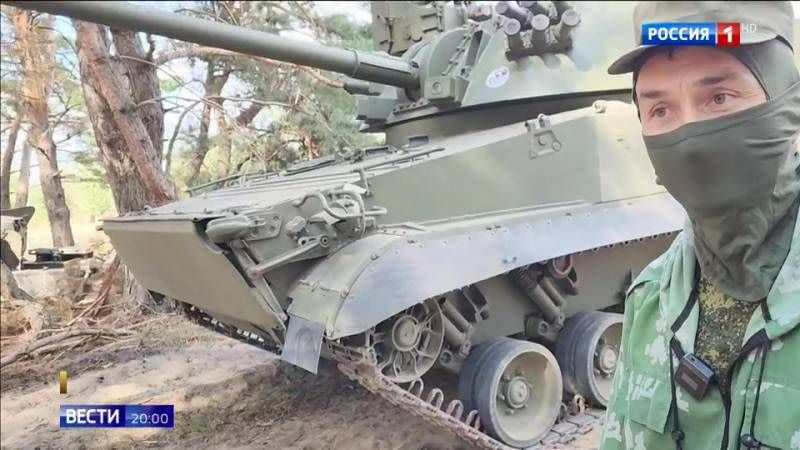
Twenty-five years ago, Russian artillery manufacturer Motovihlika presented a prototype hi-tech self-propelled hybrid gun/mortar called the 2S31 Vena at an arms show in the United Arab Emirates. Over the years since, Vena completed development, but languished without major orders.
But as Russia struggles to manage a diminished supply of armored vehicles and artillery ammunition, it’s scraping up whatever it can send into the battle—which now apparently includes the handful of 2S31s delivered for testing in 2010.
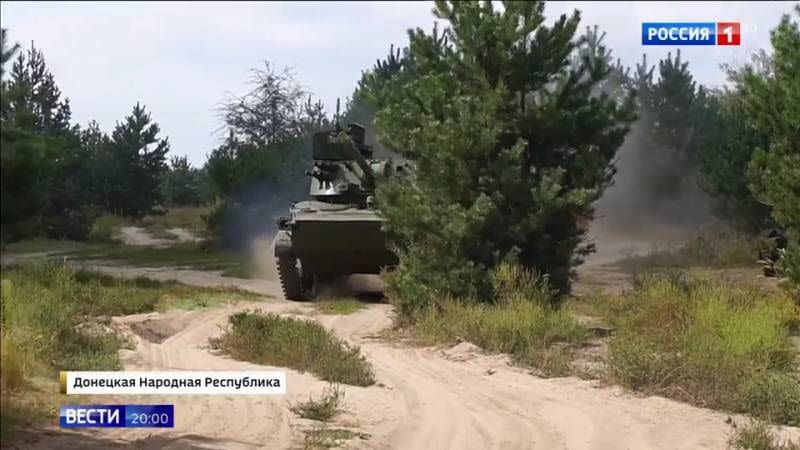
A recent Russian state news segment claimed that the 2S31s had been embedded in an artillery battalion and actively combat tested by airborne units in the Bakhmut area.
🧵
The first 2S31 „Vena“ 120mm Amphibious Self-Propelled Mortar was spotted in Ukraine.
⬇️ pic.twitter.com/U1UKLn21ug— WarVehicleTracker (@WarVehicle) September 15, 2023
In the summer of 2022, Russia’s armed forces burned through millions of 122- and 152-millimeter howitzer shells in hopes of achieving a breakthrough in Eastern Ukraine. By 2023, as the country’s shell supply grew dangerously low, analysts reported that Russia was turning increasingly to 120-millimeter mortars to make up the shortfall.
Nona and Vena: gun-mortars on tracks
Heavy mortars (mostly towed, but some on self-propelled 2S9 vehicles) hit roughly as hard as howitzer rounds and can be more effective at striking targets behind buildings, fortified walls, or mountains due to their high-lofted trajectory. But they have much shorter ranges than howitzers or field guns, and are thus typically assigned to infantry and armor units rather than artillery formations.
During the 1980s, Soviet mechanized troops grew interested in the 2S9 Nona self-propelled gun-mortar, used effectively by Soviet paratroopers in Afghanistan. Unlike most no-frills Western heavy mortar carriers, the 2S9’s rifled mortar was situated in a tank-like turret, and could be lowered and used gun-style for direct fire. 2S9 manufacturer Motovihlika in Perm sought to develop an improved, non-airborne version based on the welded aluminum hull of the mechanized troop’s beefier BMP-3 infantry fighting vehicle.
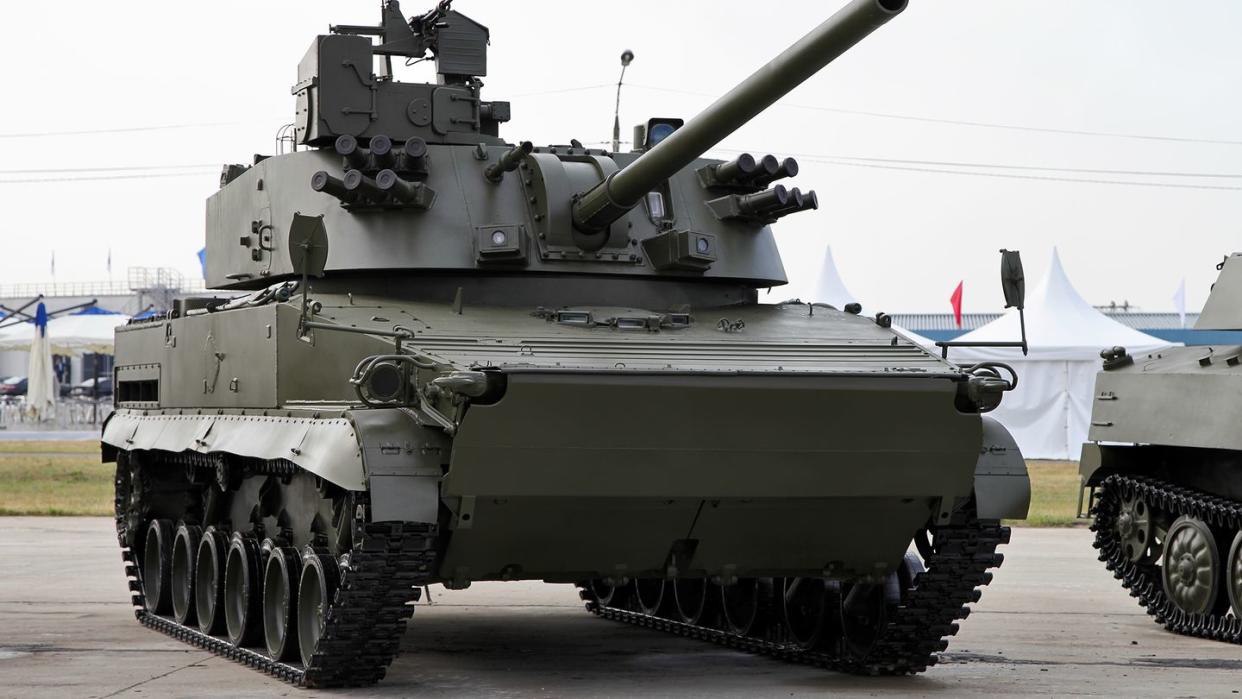
The resulting 19-ton 2S31 Vena (“Vein”) weighs twice as much as the Nona and carries nearly twice the ammunition. Its automatic fire control systems allegedly allow it to plot out fire missions in just 20 seconds and deliver accurate fire at a rate of up to 10 rounds per minute. Like the 2S9, it can also lower its barrel for direct fire to act as a short-range assault gun.
Despite two prototypes put on display in 1997, the 2S31 didn’t complete development until 2006, and Russia’s military only received a small number for testing in 2010. The type officially entered regular service in 2014—but didn’t get follow-on production orders, aside from 17 or 18 Venas exported to Azerbaijan between 2012 and 2014. These were photographed in the combat zone during the 2020 Karabakh war.
Azerbaijani 120 mm 2S31 Vena amphibious self-propelled mortar system was seen in Karabakh.
AZ has purchased 18 mortar systems from Russia.
The 2S31 Vena is based on the BMP-3 platform.@Danspiun @Rebel44CZ @GeromanAT @COIN_V2 @AbraxasSpa @aldin_ww @RALee85 @Ninja998998 @RALee85 pic.twitter.com/OXU61m8mcg— Mukhtar Magomedov (@Mukhtarr_MD) November 28, 2020
The 2S31’s key selling point was the improved fire control system of its low-pressure 2A80 gun-mortar, useable both for howitzer- or mortar-style indirect fire barrages (with the barrel elevated up to an 80 degree angle), or tank-style direct fire support (with the barrel depressed down to -4 degrees). In addition, it could execute fire missions much more quickly and accurately than the 2S9.
The 2S31 can carry a total of 70 120-millimeter rounds, 22 of which are ready to fire and the remainder of which are in storage. The rounds are breech-loaded with assistance from an automatic rammer, and a rear hatch allows additional rounds to be loaded from outside.
For longer-range shots, there are rifled high explosive shells. These include the 43.7-pound 3VOF54 and rocket-boosted 3VOF55, capable of striking targets 5.5 and 8.7 miles away, respectively. Meanwhile, old smoothbore-type mortar bombs like the 35-pound 3VoF53 and 3VOF68 attain ranges of 3-4 miles.
Against armored targets, there’s the 3V032 and 3V034 cluster rounds packed with 35 dual-purpose (anti-armor/anti-personnel) bomblets. There’s also the short-ranged (max 1 km) 3VBC14 direct-fire shaped-charge HEAT round that can penetrate 600 millimeters of steel armor equivalent. And on top of that, there are smoke, illumination, thermobaric, and incendiary rounds, as well as KM-8 and Kitolov-2M smart rounds designed to home in on targets painted by a laser (most likely mounted on a drone).
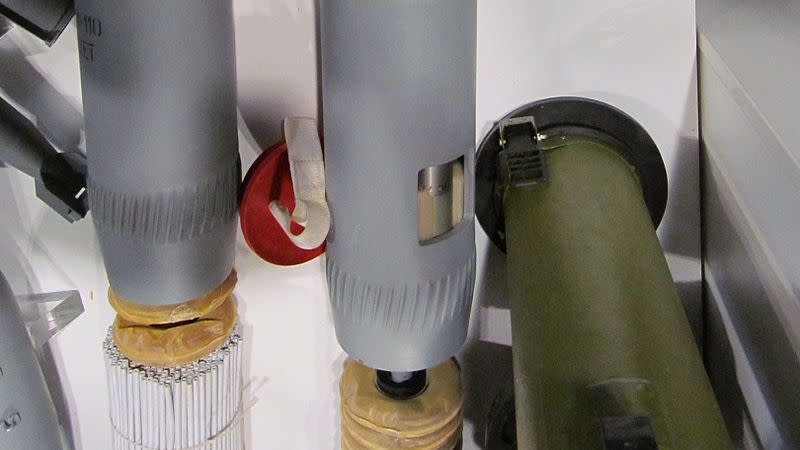
The 2A80 is also said to be compatible with 120-millimeter rounds built by virtually any country, whether they be smoothbore or rifled. That opens up additional avenues for, say, Russia to source ammunition from third parties—even including Western-built 120-millimeter rounds. Occasionally, questionable claims that the 2S31 has a max range of 11 miles may refer to using French APCM rounds.
The Vena’s fire control computer calculates a firing solution and automatically lays the gun, with adjustments based on input from a barometric weather sensor and topographical positioning system. The gunner may use either a 1P51 electro-optical imagine intensifying sight for indirect fire, or the 1P50 sight for panoramic surveillance and direct fire. Upon shooting, servos in the turret correct for the recoil to avoid second-round accuracy drop off. Supposedly, Russian combat equations imply that the 2S31’s improved fire control makes it twice as combat effective as a towed 120-millimeter mortar.
The Vena is propelled by a 450-horsepower UTD-29 diesel engine (which can also use kerosene or gasoline), and uses torsion-bar suspension aided by hydraulic shock absorbers on three of the road wheels. It attains a maximum speed of 43.5 miles per hour moving forward, and 13 mph in reverse. It also has two waterjets and a trim vane allowing fording of water obstacles.
The 2S31 is lightly armored (max 16 millimeters) for defense against small arms and shell splinters, though a U.S. military database claims that bolt-on steel plating can be installed for frontal protection against 30-millimeter autocannon rounds. Vena also features a Shtora-1 self-defense system, including a laser warning system alerting the crew if they’re painted by laser-guided anti-tank missiles, and twelve 82-millimeter smoke grenade dischargers on the front turret to obscure the vehicle from attack.
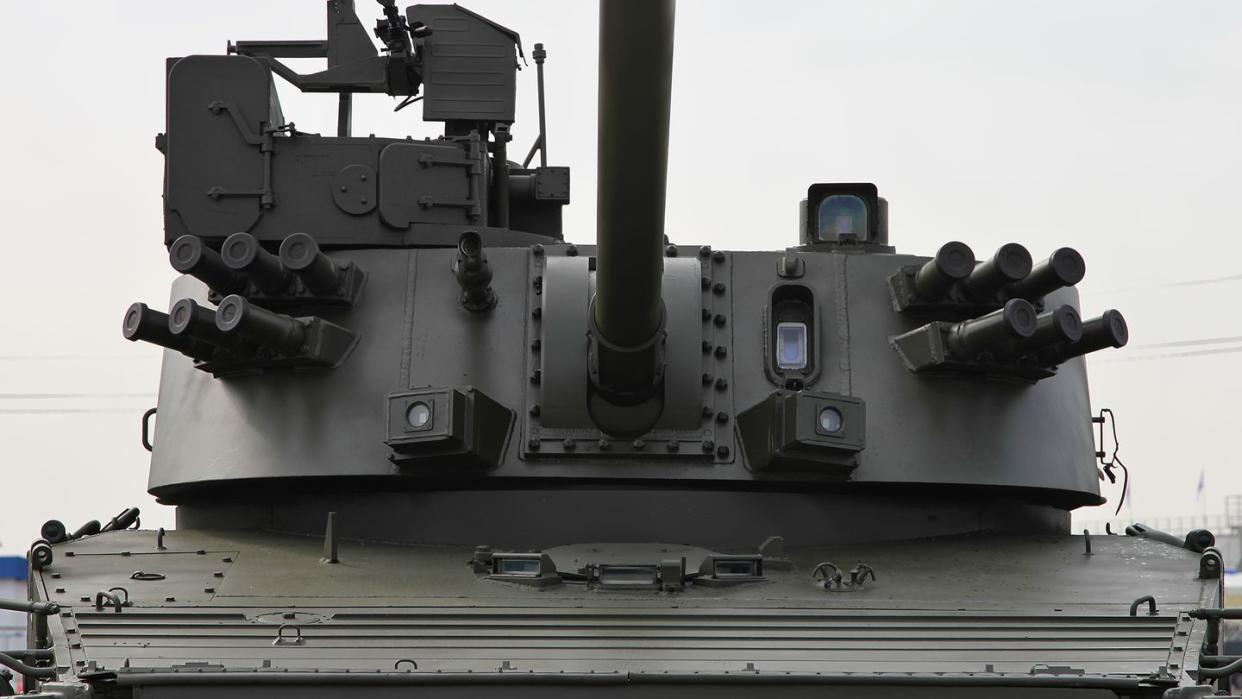
An automatic fire suppression system should trigger in the event of a penetrating shot, and a remote-controlled PKT 7.62-millimeter cupola-mounted machine gun provides close-defense.
Other equipment on the 2S31 includes a R-163-50U Crossbow digital radio (range 12.4 miles), a 1D2SS laser rangefinder/designator (max range 4.3 miles), and a built-in toilet.
A curious offshoot of the 2S31 is the 16-ton 2S34 Khosta vehicle, which mounts the Vena’s gun on the hull of a 2S1 122-millimeter howitzer vehicle. An estimated 48 2S34s were converted from 2S1s for roughly 22.15 million rubles apiece in 2012 (today, that’s equivalent to $227,180). These serve in the 20th and 21st Guards Motor Rifle Brigades. At least two Khostas were captured by Ukraine in 2022.
Ukrainian farmers with a captured Russian 2S34 Khosta 120mm howitzer/mortar. pic.twitter.com/5VCZSKCCEH
— Rob Lee (@RALee85) April 3, 2022
2S9 Nona: Veteran of Afghanistan, Chechnya and Ukraine
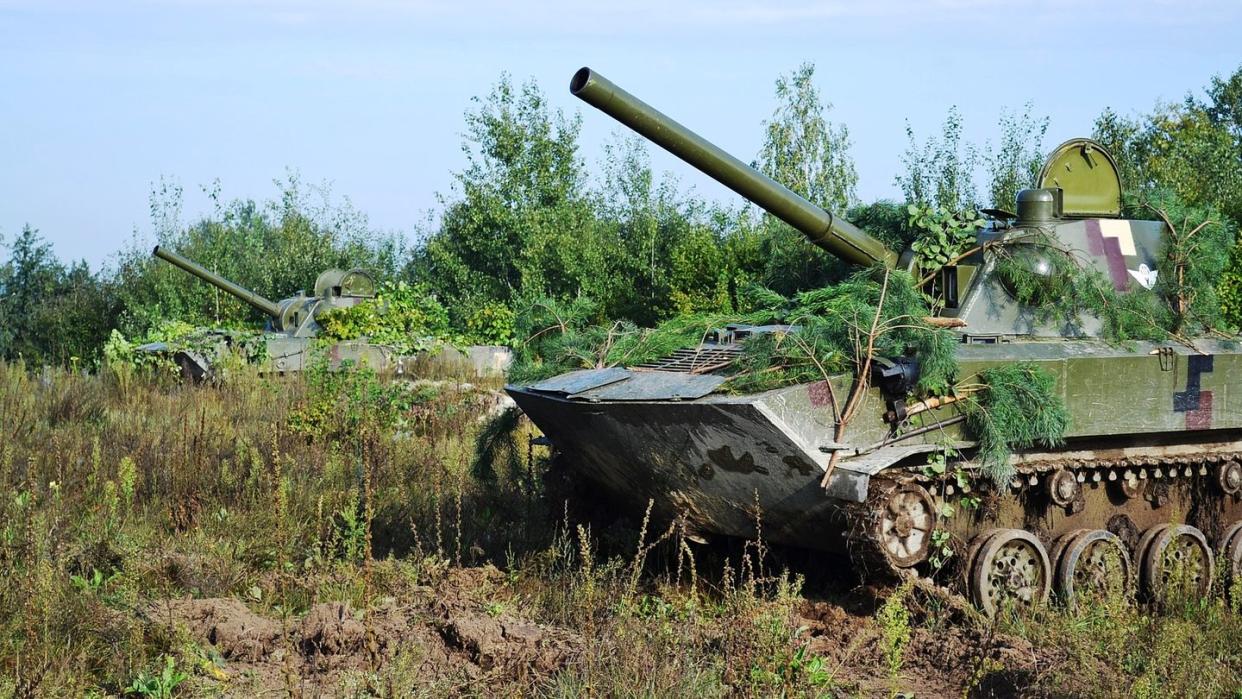
The Vena (“Vein”) is best understood in context of the 2S9 Nona, devised in the 1970s to be parachuted out of cargo planes alongside Soviet paratroopers. Accordingly, Nona (a Russian acronym for ‘Newest Ordnance of Ground Artillery’) was based on that service’s BTR-D air-droppable armored utility vehicle hull. A battalion of 18 Nonas in three batteries was attached to each regiment.
The 2S9 Nona-S battery pic.twitter.com/2eAM0m8wBb
— TankDiary (@TankDiary) April 24, 2022
Once landed, the 2S9’s 2B51 gun/mortar provided both direct-fire support (formerly provided by retired ASU-85 self-propelled guns) and the indirect fire capability of towed 120-millimeter mortars. It had a maximum range of 5.5 miles, extendible to 8 miles through the use of rocket-propelled rounds, and plotting a fire mission took 5-7 minutes. The vehicle was highly mobile, thanks to a hydropneuamtic suspension combined with a 240-horsepower 5D20 six-cylinder diesel engine.
The 9.6-ton 2S9 entered service in 1981, and was immediately deployed into combat supporting Soviet paratroopers in Afghanistan. It grew popular for its versatility, good terrain handling, and ability to strike targets on the reverse slopes of mountains where rockets and howitzer rounds couldn’t reach. On the downside, troops dinged the 2S9 for inadequate ammunition supply (25 rounds), excessive wear to the chassis, and intaking gases vented by the gun into the firing compartment. Some of these flaws were corrected in the subsequent 2S9-1 and 2S9-1M submodels, with ammunition increased to 40 rounds and fire-mission plotting time reduced to roughly one minute.
2S9s also saw action in Chechnya, where they were credited with saving encircled Russian paratroopers of the 106th Airborne in Grozny. In February and March of 2000, they supported the last stand of a 90-strong Russian parachute company that was enveloped by withdrawing Chechnyan forces at Hill 776, but couldn’t prevent it being overrun or all but six being killed.
2S9s also saw extensive action during Russia’s invasions of Ukraine in 2014 and 2015—both with Russian airborne and separatist forces and with Ukraine’s spearhead 25th Airborne Brigade. Losses of thinly armored vehicles to artillery and ambushes, however, were high.
A total of 1,423 2S9s vehicles were produced. Russia’s airborne, marine, and border guard branches are thought to still field around 257 2S9s, and another 500 are estimated to be in storage. Azerbaijan, Kyrgzstan, Moldova, Syria, Ukraine, Turkmenistan, and Uzbekistan also retain modest inventories of 2S9s.
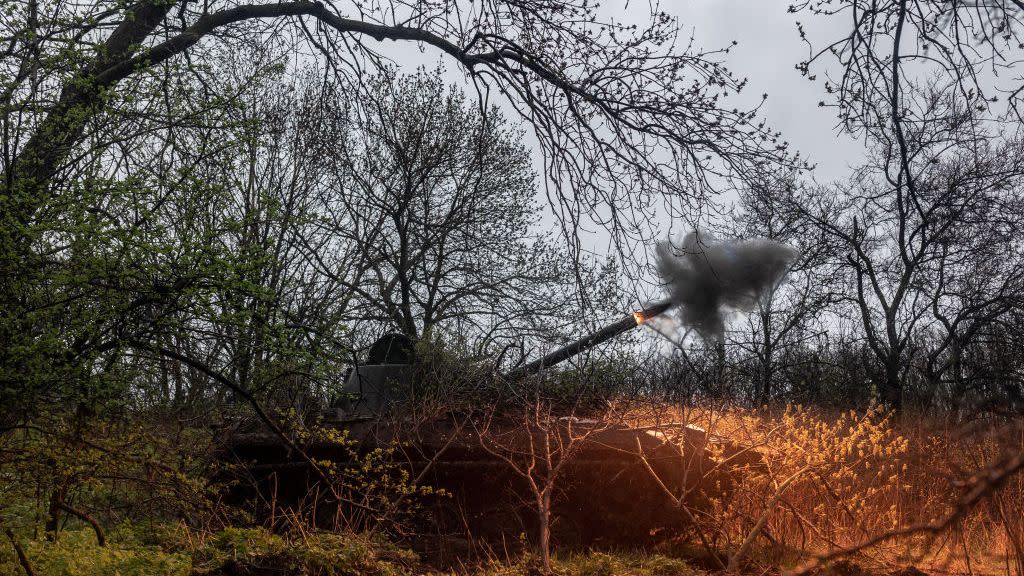
Besides the original towed 2B51 mortar (the Nona-K) and self-propelled Nona-S, there were several less ambitious projects to fit this weapon to other vehicle chassises. The 2S23, or Nona-SVK, mates the 2B51 to a BTR-80 eight-wheeled APC. There are an estimated 40 in Russian service, and 12 have been sold to Venezuela.
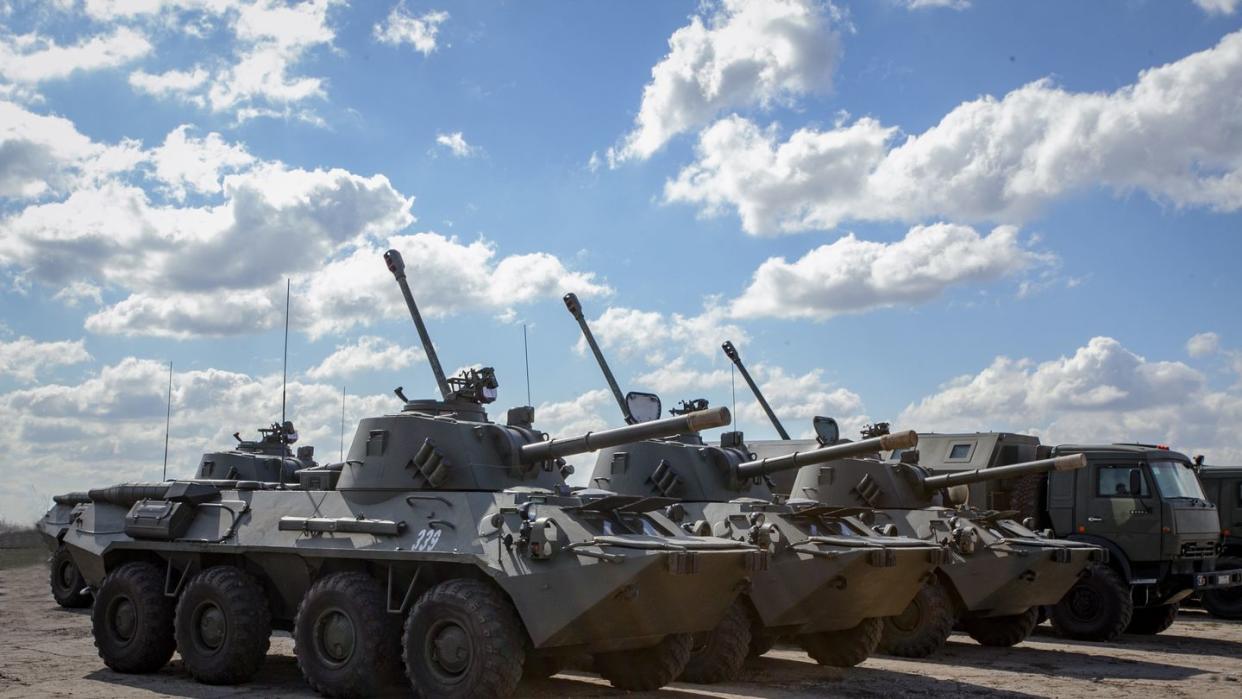
Another Soviet project to install the Nona’s turret onto the BRM-1K reconnaissance vehicle was realized in 2021 by Ukraine’s Shepetivka Repair Plant, resulting in a vehicle designated the 2S17-2 Nona-SV.
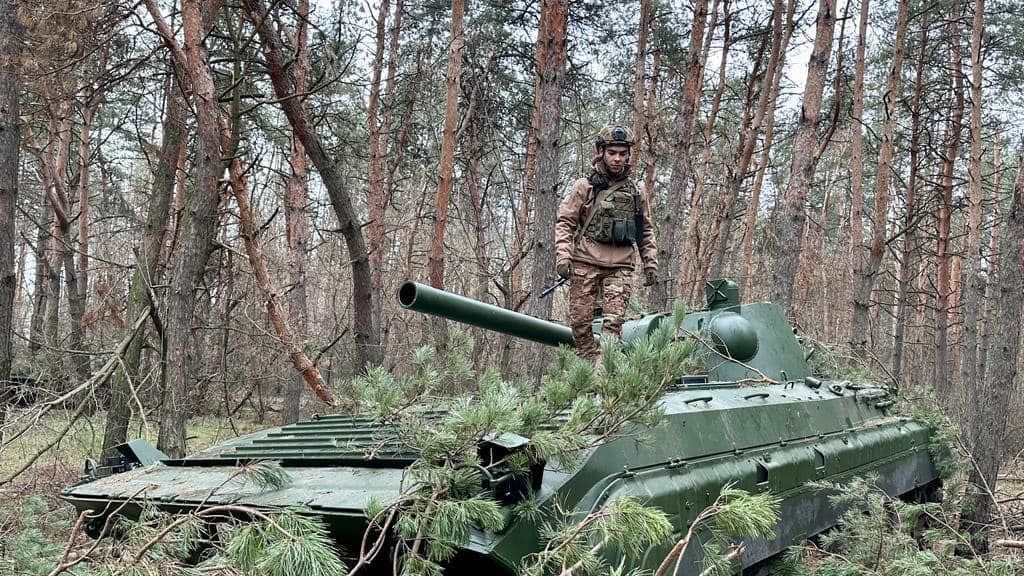
Since Russia launched its full-scale invasion in 2022, photos confirm that Russia has lost 35 2S9s and four 2S23s (destroyed or captured), while Ukraine is confirmed to have lost four 2S9s and two 2S17s.
Do armored gun-mortars have a future in Russia’s military?
Enemy long-range fires were a much rarer problem for 2S9s battling insurgents in Afghanistan and Chechnya. But in the artillery-centric war in Ukraine, range is of premium value. A gun or rocket launcher that can strike enemy batteries from beyond the reach of retaliation is at obvious advantage.
Despite its improved lethality, the Vena lacks the range needed to riposte against Western artillery supplied to Ukraine, and thus can’t disrupt the artillery war. Nonetheless, it could be lethal against frontline infantry and vehicles, help Russia’s military more effectively employ the 120-millimeter mortar rounds it’s compelled to use, and facilitate the adoption of smarter tactics that emphasize precision over volume.
Though, that would depend on Russia ordering substantial production of these systems, after declining to do so for 13 years.
An active-duty U.S. Army officer wrote to PopMech that, perhaps, “their deployment means Russia still has a decent amount of 120mm shells or they’re confident they can get more. Russia uses a tiny amount of self-propelled mortars compared to everything else, and the fact they get routinely destroyed by GMLRS missiles [fired by HIMARS or M270 launchers] is so incredibly embarrassing.”
#Ukraine: A Russian 2S9 Nona 120mm self-propelled mortar was destroyed and another one was taken out of action by two GMLRS strikes of the Ukrainian army near Makiivka, #Donetsk Oblast. pic.twitter.com/FByKkv7gRV
— 🇺🇦 Ukraine Weapons Tracker (@UAWeapons) September 18, 2023
Incredibly, another Nona successor—the 2S42 Lotos—completed factory tests by a subsidiary of Kalashnikov in August. The 2S42 Lotos is based on a lengthened-variant of the parachute branch’s latest BMD-4M fighting vehicle and, like Vena, it’s been kicking around for several years without orders.
The 18-ton Lotos also has a crew of four and uses the 2A80 gun-mortar, though it uses a different Zavet-D fire control system. It has lower ammo capacity (sources claim 40 or 62 rounds) and, reportedly, a slower max rate of fire (6-8 rounds per minute). But two can fit in an airplane for parachute-dropping.
artillería aerotransportada 2S42 "Lotos". 🇷🇺 pic.twitter.com/xZOiixmNmy
— ArmaduraXXI💯🇪🇦 (@oscar198o) August 12, 2023
There’s reason to question whether continuing to develop and procure a separate line of more expensive, but less-well-armored airborne armored vehicles for a branch that has yet to use parachuted armor operationally is a sensible use of scarce resources. Time will tell whether Russia is inclined to finally invest in Vena or Lotos, or whether the vehicles remain curiosities never to be produced in meaningful quantity.
You Might Also Like
